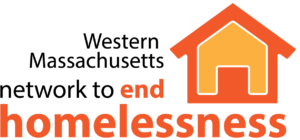There will be a Family Group meeting on Tuesday, April 21 from 10:00 a.m. to 12:00 p.m.. The meeting will held at the Springfield Liberty DTA office, 95 Liberty St., Springfield, MA. When you arrive at the office notify the front desk that you are attending a meeting and the staff will arrange to escort you to the appropriate meeting room.
On Tuesday there will be discussion regarding:
ICHH Grant update
Regional Coordinating Network efforts and updates
Regional Homeless efforts
Sharing of the resource information that we collaborated on during the last meeting
Come prepared to share information you have that will enhance our conversations and analysis towards delivering services for homeless families in our region.
————–Below are notes from the last meeting held March 18:
Purpose of Meeting. Yasmin opened the meeting by explaining that she saw a need for us to do a gap analysis and to discuss improvement of communication in order to connect those with needs to agencies providing the needed services/housing.
General Discussion. There was some discussion about the need to keep in mind the issue of targeting. It is expected that the gap is bigger than the new resources that are being allocated to fill it. Therefore, we are not only identifying gaps, but also choosing which gaps to fill.
The group talked about the need for flexibility, and feel that it is helpful to allow resources to be used along the continuum of prevention/diversion/rapid rehousing, without restricting these definitions so that the funds cannot meet the need that will keep a particular family housed. At the same time, though, we recognize the need for sufficient definitions of eligibility and types of assistance to ensure that we are able to measure the effectiveness of our programs. In addition, we need to be aware that prevention cases may have different front doors than diversion and rapid rehousing cases.
We also discussed the fact that there are existing (somewhat) overlapping resources: Toolbox, RAFT, Springfield’s Rapid ReHouse program. There will also soon be significant federal funding for prevention and rapid rehouse. We will want to map the eligibility for each of these programs and define how they work together.
There was interest in who DTA is seeing entering into homelessness—both DTA-eligible and non-eligible families. Jim Reis mentioned that he had met with DTA staff about this issue last week. Two populations identified were: 1) Families with some income and capacity to increase income (who could be helped with a time-limited housing subsidy and vocational training); and 2) Young mothers (teens and early 20s) who are wanting to move out of their family homes. Jane Lindfors also identified that a very high percentage of families in shelter have experienced recent domestic violence, even though they are not identifying it as the immediate cause of their current homelessness, and even though they may not qualify for DV shelters because they have left the city/state in which the abuser lives. We agreed about the importance of data and research in identifying who we will serve.
Initial Discussion of Needs. We started talking about unfilled needs. Three that were immediately identified were: 1) the need for infrastructure support in Franklin County; 2) some type of Housing Locator—perhaps like HousingWorks, probably needing some dedicated staff time to make sure that it stays updated; and 3) tool for resource connection—a database? –we decided it should be a virtual Project Homeless Connect, but one focused toward both agency staff and consumers.
One suggestion for targeting was that we acknowledge that the purpose of the DTA re-procurement was to shorten length of stay (which is rapid rehousing), so perhaps we want to focus on reduction of households entering into homelessness (prevention/diversion).
Following the initial discussion, we moved to identifying resources, needs and wants on paper.

